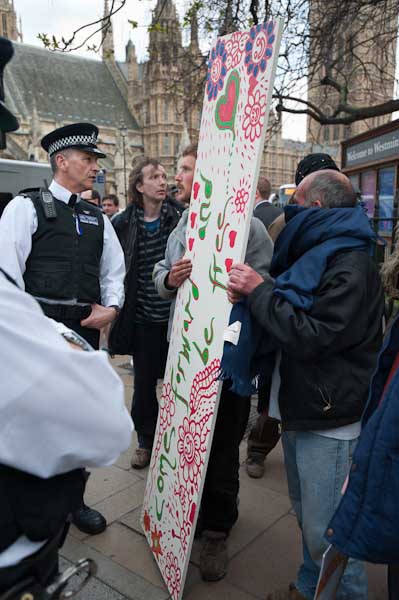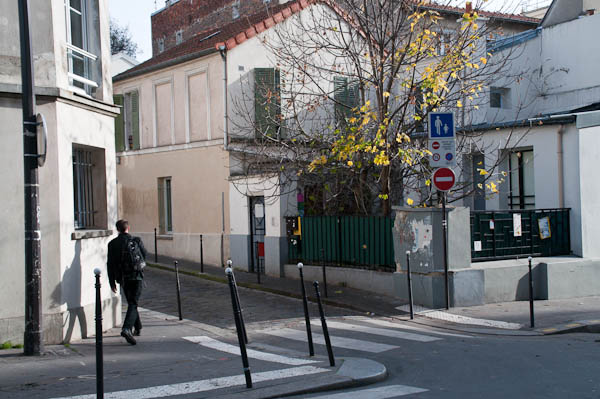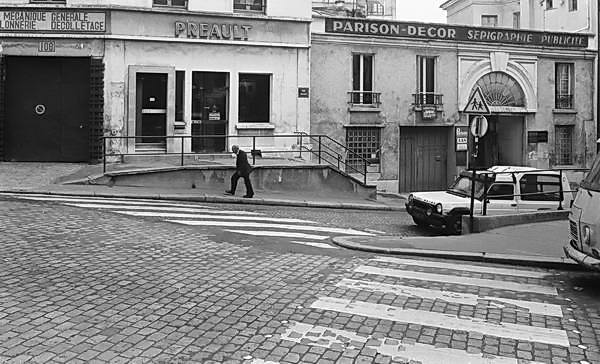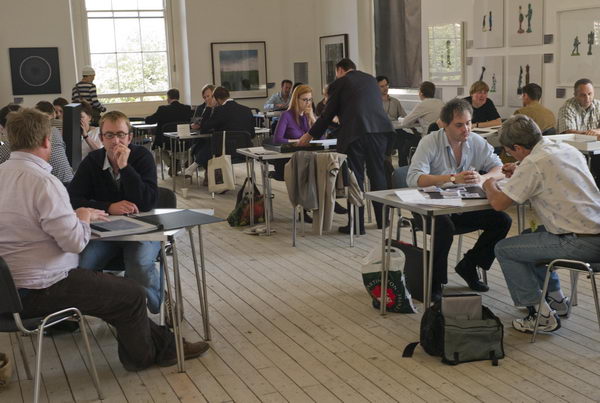
The Thames from the top deck of a bus on Battersea Bridge on my way home
Chelsea isn’t my favourite part of London, always a slow bus ride for me, either from Victoria or Clapham Junction, although yesterday I enjoyed the journey back as the evening lighting was beginning to work its magic as the bus made its way over Battersea Bridge, and I was feeling rather pleased after a pleasant hour or so at Michael Hoppen Contemporary with the aid of some interesting company, a couple of beers and some good photography.
The current show, until 5 June is one of the most interesting I’ve seen in that space which so often seems to be given over to mildly pornographic visions that doubtless sell well. But this show was different. Daniele Tamagni‘s “Gentlemen of Bacongo” is a fascinating study of a genuinely interesting phenomenon.
Les Sapeurs get their name from ‘Societe des Ambianceurs et des Personnes Elegantes‘ – or alternatively from the English version, ‘Society for the Advancement of People of Elegance‘, and sapology is more than a look, it is (as one might expect in a Francophone society) a philosophy espoused by its exponents. Despite the poverty in the society in Brazzaville, Congo (or perhaps as a reaction to it) they aim for an elegance and style that is based on an idealised tradition of the English dandy, although sometimes allied with a flamboyant use of colour that would seldom be imaginable in our duller clime.
Many of the finely tailored suits are – at great expense, sometimes involving years of saving – from Saville Row and leading French and Italian designers – and are complemented by hats, shoes, ties, carefully folded and displayed handkerchiefs and gloves, along with cigars (seldom actually smoked) and pipes.
Le Sape has its own highly formalised aesthetic, at its base a ‘trilogy of colour‘, aiming for a perfection of effect within a particular choice of three colours. It even has a written set of ‘10 commandments‘ (actually only eight as numbers 9 and 10 are “Still to be written”) of which number 2 is “You will not sit down“. Clothes are for posing in, for appearing in on the street or at the bars at which the Sapeurs meet, for putting on a show.
Most of what I know about them comes not from the images on the wall but on the book of Tamagni’s work (Gentlemen of Bacongo, Trolley Books, 2009, ISBN: 978-1-904563-83-9 – and the site has a good slide show of ten images) which is more impressive that the show, enabling Tamagni to portray a much wider and more rounded view of his subjects. On the gallery wall they perhaps become a little too much like exotic specimens. It is hard to photograph people like this who are so conscious of their own appearance and image and are almost always posing, but he manages both to project them as they would like to be seen and also at times to get beyond that.
I first met Tamagni in Peckham in 2007, and I wrote about his contribution to a show there and, something I found rather more interesting, his work on black churches there, from which perhaps the most striking image in that show came. In the same year he won the best portfolio in the Canon Young Photographer award for Italy for his pictures of dandies from the Congo, and in 2010 he gained the ICP award for Applied Fashion photography.

A sapeur poses in front of Daniele Tamagni’s pictures at Michael Hoppen

Sapology has spread from the Congo as Sapeurs have gone abroad to live and work, and the opening night was made more memorable by the attendance of one of them from London, who had also brought along a collection of his shoes. As usual I couldn’t resist taking a few pictures, two of which you see above.

AramintaDe Clermont and Daniele Tamagni
Also showing in the gallery are a series of portraits by Araminta De Clermont of young South African girls from the Cape Flats dressed up for their end of school ‘Matric Dances‘. For many of these young women it is the night of their lives and their families have planned and saved over the year to create a night of fantasy. She has photographed them very much as fashion models in the style of fashion magazines. Born in the Isle of Man she graduated in architecture before going on to study photography in London and South Africa. She now lives and works in Cape Town, where these pictures were shown in 2009.
Her first solo exhibition “Life After” at Joao Ferreira Gallery in 2006 looked at South African ex-prisoners and their tattoos. You can see six pictures with her comments in a Guardian slide show, Prison Ink.







